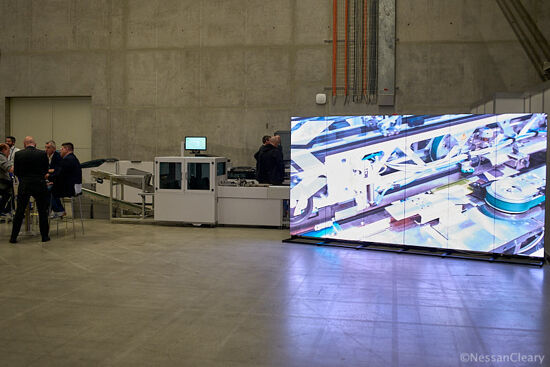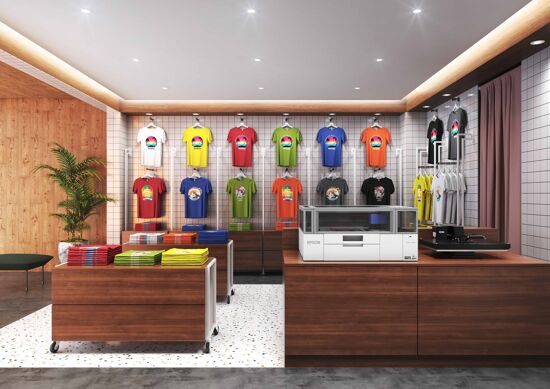Automation and AI
.png?width=750)
Paul Sherfield discusses the relationship between automation and artificial intelligence. The level of automation is dependent on the size of the businesses, the market and the technologies used.
- Automation cannot be discussed without referencing AI and its impact on this area
- The level of automation will dependent upon the size of PSP, the markets and productions they address, and the technology currently used
The main areas of automation, the printing sector and their clients, that seem to be impacted by AI are content creation, both text and images and coding, for creation and correction. Content creation using such as ChatGPT for writing has had impact on the many writing areas (not this one).
Others such as Adobe Express, Google ImageFX, Midjourney and OpenAI’s DALL-E3 are automating the image creation and retouching spheres These AI based functions are being introduced into other image and content creation systems. An interesting one is Perplexity which is a cross between an AI driven search engine and content creator.
These systems are only as good as the ‘Prompting’, the text-based instructions they need. These can be seen as briefing the AI. The same rule applies as before to any data driven application, ‘rubbish in, rubbish out’.
Before moving away from AL, it’s influence can ready be felt in our sector on functions such as MIS systems, pre-press, digital fronts ends and imposition and ganging software’s.
This brings us nicely into the main topic of the article, automation.
Automation and its many benefits will vary from business to business based on client need, size of company and processes and product. It can speed up the back-office administration and product processes, deal with the increasing shortage of trained staff and reduce costs.
The main areas to consider are:
- Sale, accounts and administration
- MIS/CRM systems
- Web to prints solutions
- Pre-press systems
- Presses and post press equipment
- Materials handling
The level of automation will be different as these differing markets and products have totally differing interaction with their clients.
The first will have connected all software systems, often using bespoke applications using XML/JDF or similar from its own development team or a third-party contractor.
Orders will only be accepted via a web to print portal, then processed automatically to pre-flight, pre-press and to press, now often using AI to gang and impose differing jobs and the decision on choice of press and/or process.
The presses used with have the latest technology to speed up areas such as make readies, creating new ICC device profiles, material handling etc.
The invoicing and delivery will also be automated from within this integrated solution.
There may also be in very large companies, robotic materials handling using AGVs, automated guided vehicles, to get substrates to presses and then on to finishing, so joining up the areas itemised above.
There will be little or no personal communication between the client and the supplier, other than the client uploading a file into the web to print portal and notification by email of any issues, soft proofs to approve online and the delivery date and time.
At the other end of the scale the company producing a large range of products on a large number of substrates will have many face-to-face interactions with its clients.
The product brief from the client to obtain costs and estimates may be at a meeting with the supplier imputing ideas and changes that may help the client.
The files may be submitted via a wed-based portal, however there may be extensive pre-press work needed, including physical proofs. So, another face-to-face meeting.
There may even be the need for a press pass by the client.
So, how can this printer benefit from automation? The back office areas such as MIS systems, production control, pre-press can be linked and made paperless using digital works instructions, using systems such as Enfocus Switch and Ricoh Process Director. New cloud based software from Four Pees called Atomyx also promises to provide the next level of connection and automation of disparate systems and software’s.
Many of the MIS softwears and the workflows solutions already have API’s (Application Programming Interface) which enable then to communicate with other systems.
Using presses and other equipment that can communicate with your software solutions will add to automation and therefor cost savings and efficiency,
As can be seen there is no one solution re automation. It depends on the client, product and equipment within the printing company, and of course the skills and knowledge of the staff. But the tools are there that should suit all sizes and product types.
The need for automation needs to be analysed based of the systems and production currently employed and the number of human touch points that could be automated.
To conclude, FESPA will undoubtably return to this area over the next months and years, both on this web site and within their exhibitions.
Discover the latest innovations in automation at FESPA Global Print Expo 2024, Europe’s leading print and signage exhibition. Taking place from 19th – 22nd March 2024 at RAI Amsterdam, Netherlands. Register here to visit and use code FESJ405.
Topics
Interested in joining our community?
Enquire today about joining your local FESPA Association or FESPA Direct
Recent news

The importance of Personalisation in Direct Mail - The Power of Print
Jeroen van Druenen, CCO of Jubels discusses how personalised direct mail, especially print, boosts engagement and ROI by tailoring content to individual recipients. Using variable data printing (VDP), marketers create unique designs and offers, enhancing relevance and fostering stronger customer relationships. Physical mail's tangibility and lasting impact further amplify personalisation's effectiveness.

What are the current trends for digital screens?
Digital screens are evolving rapidly, moving beyond simple signage. MicroLED technology improves resolution and efficiency, while 3D and AR displays offer immersive experiences. AI is transforming content creation and analytics, personalising interactions and optimising screen placement. Larger, wall-sized screens and temporary rentals at events are becoming more common. As screens become ubiquitous, innovation focuses on eye-catching solutions to maintain audience engagement.

Hints and tips for vehicle wrapping success
While rising demand for vehicle wrapping is good news for the industry, this is placing more pressure on companies to deliver quality work at a solid pace. Here, Rob Fletcher picks up some tips from several experts in this sector to help wrappers operate smoothly.

What are the opportunities in Personalisation for Sportwear and Signage?
Rob Fletcher discusses the growing importance of personalisation and digital innovation across sectors. Major brands use personalised print to engage customers and boost sales. Personalised sportswear demand is increasing, and companies like Eurojersey embrace sustainable manufacturing and digital transformation.